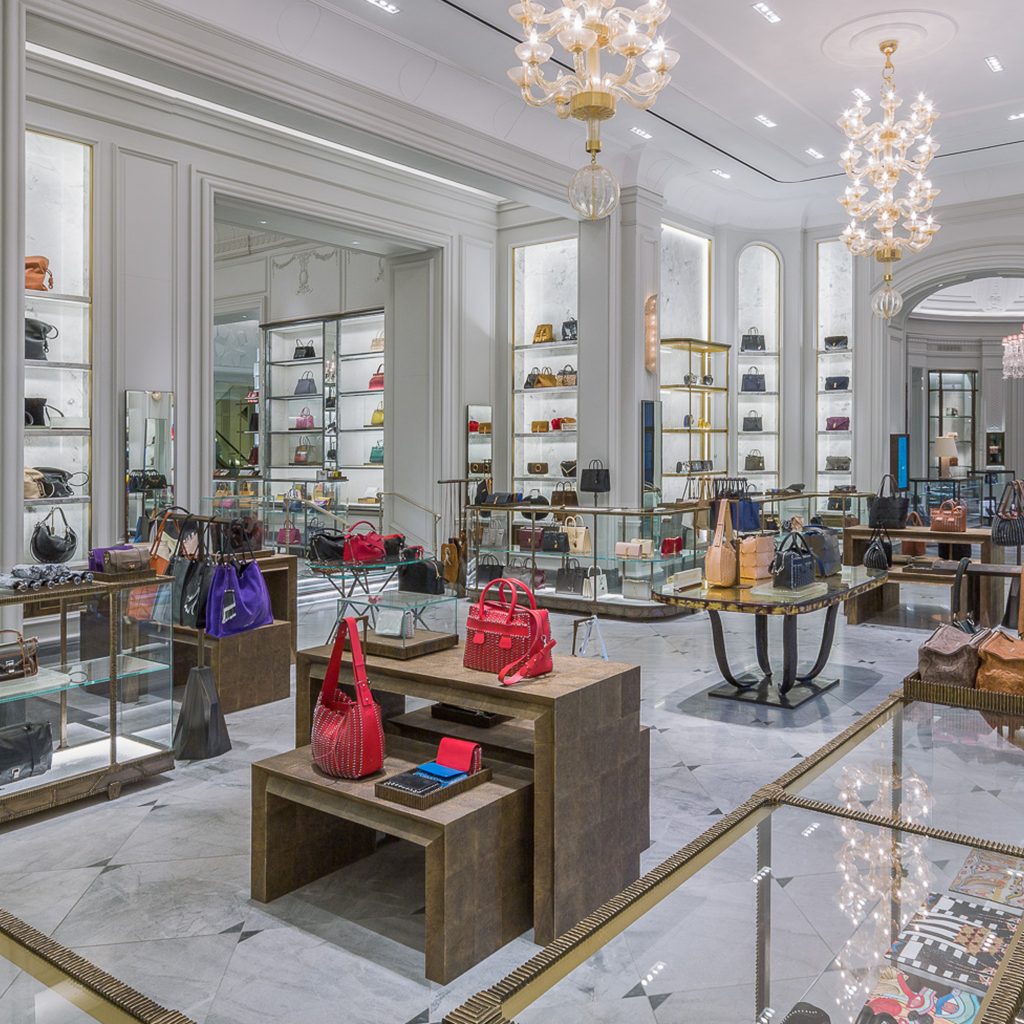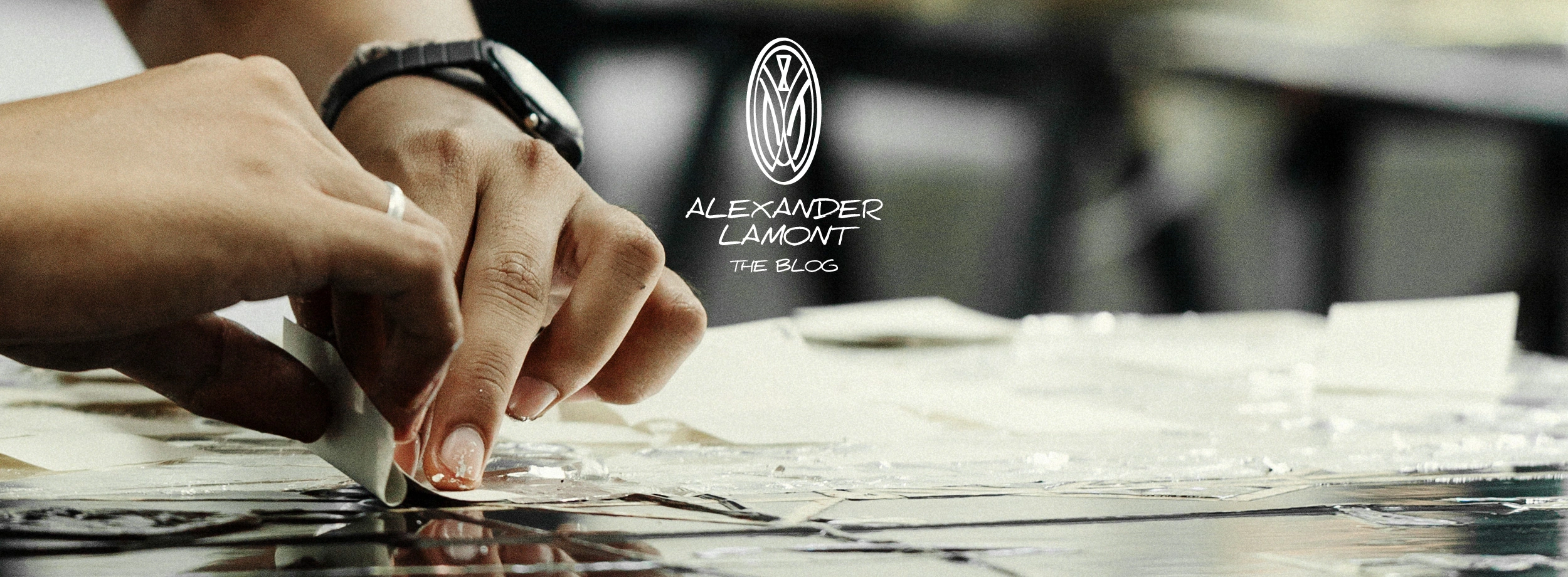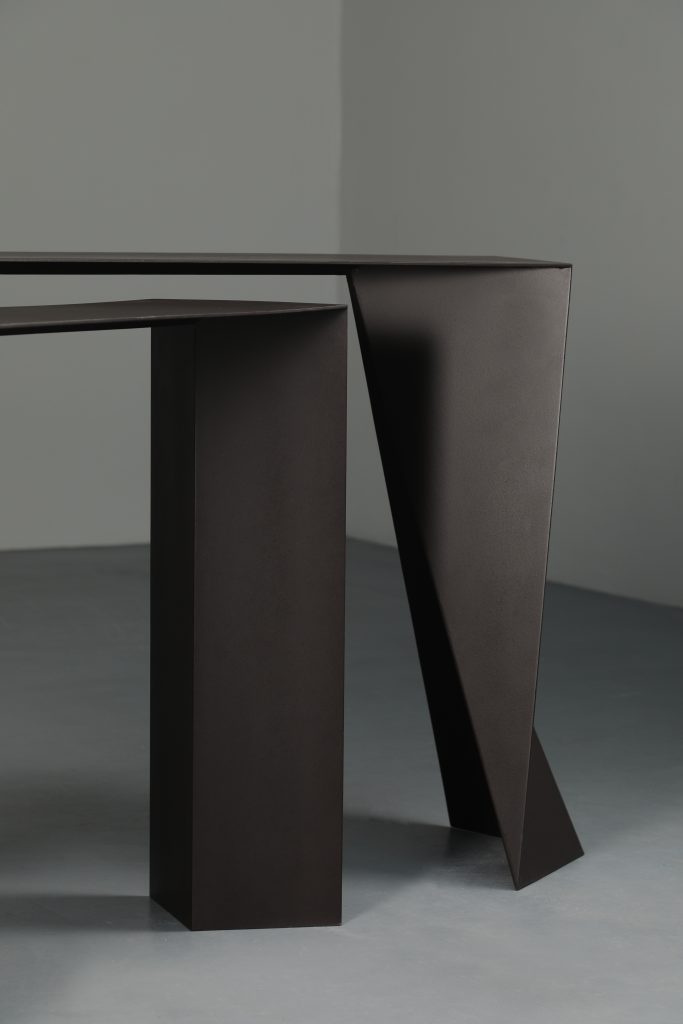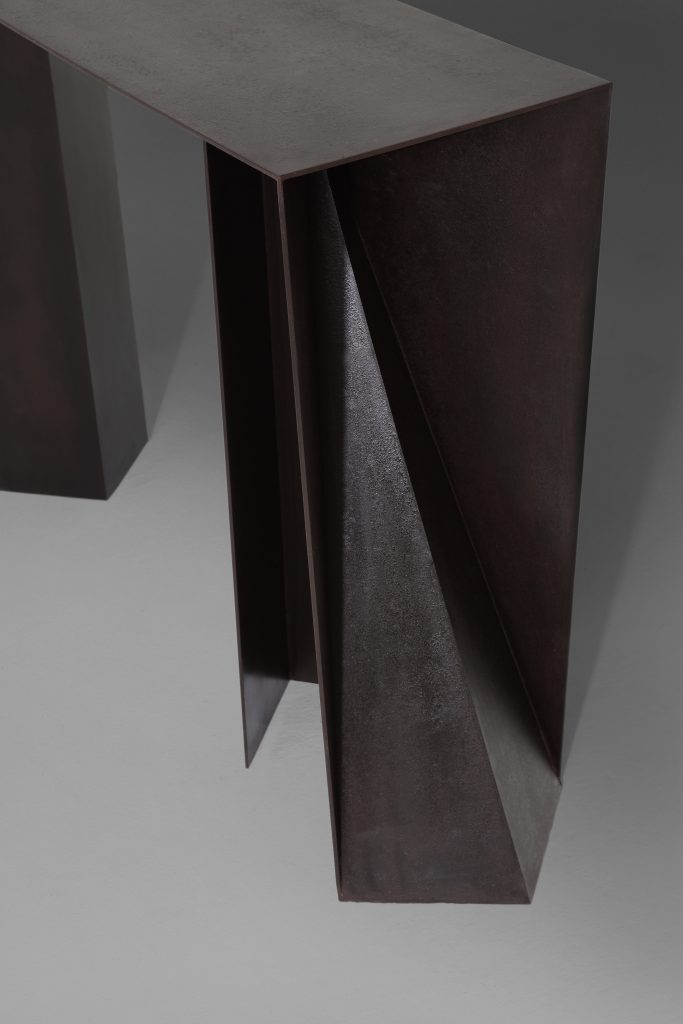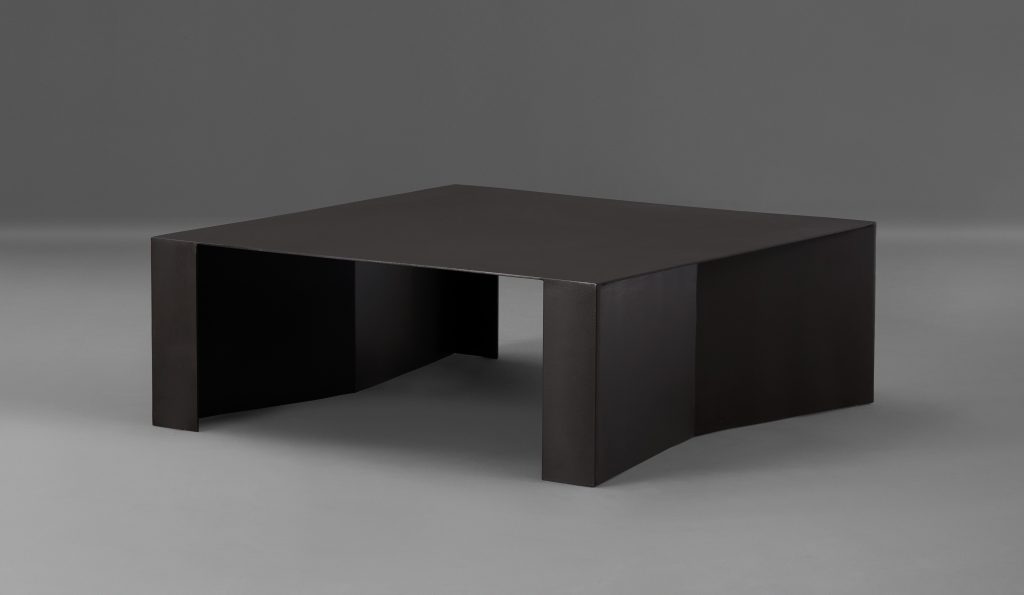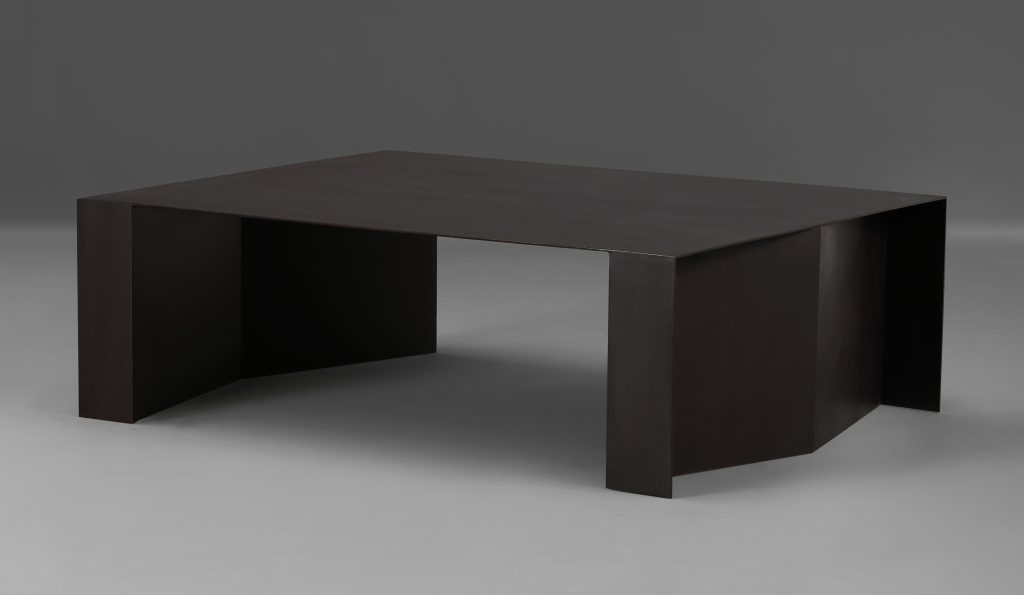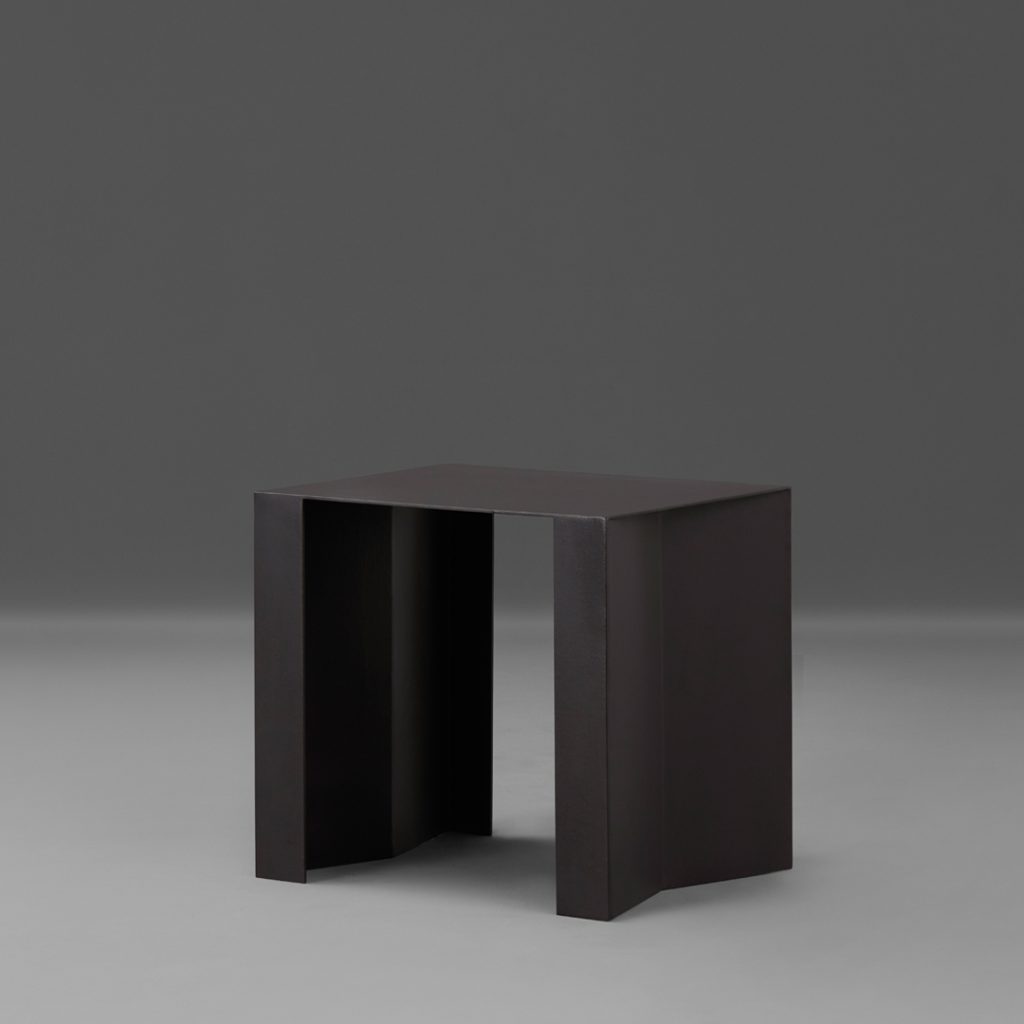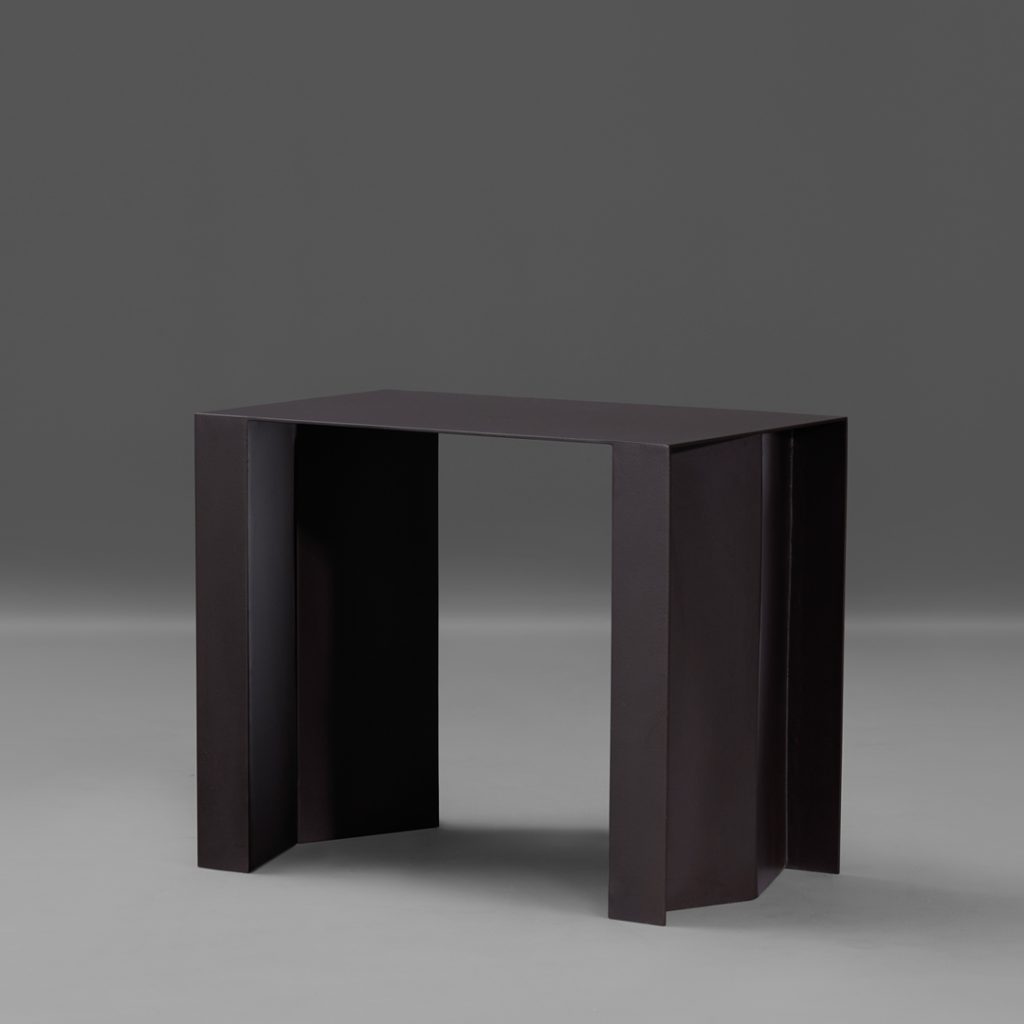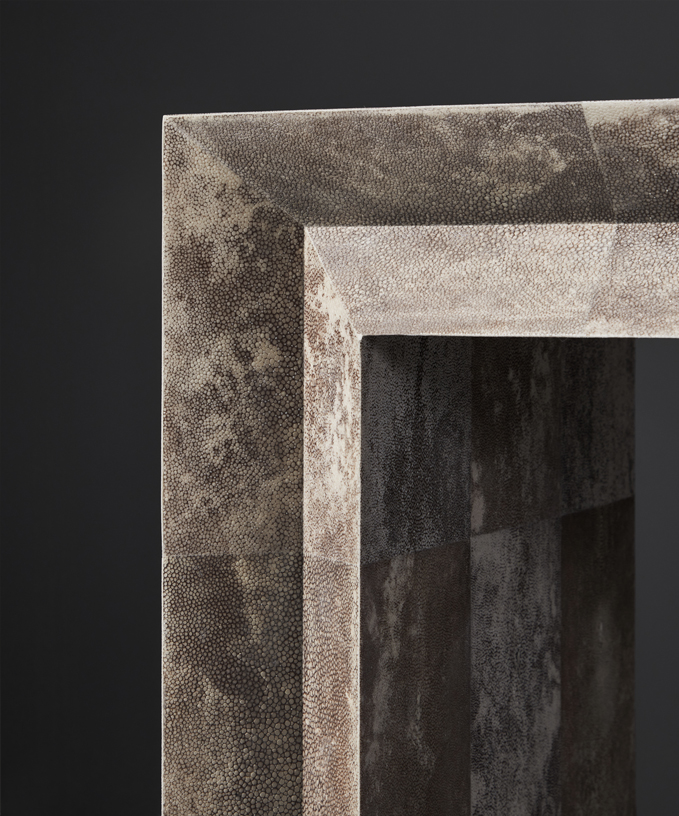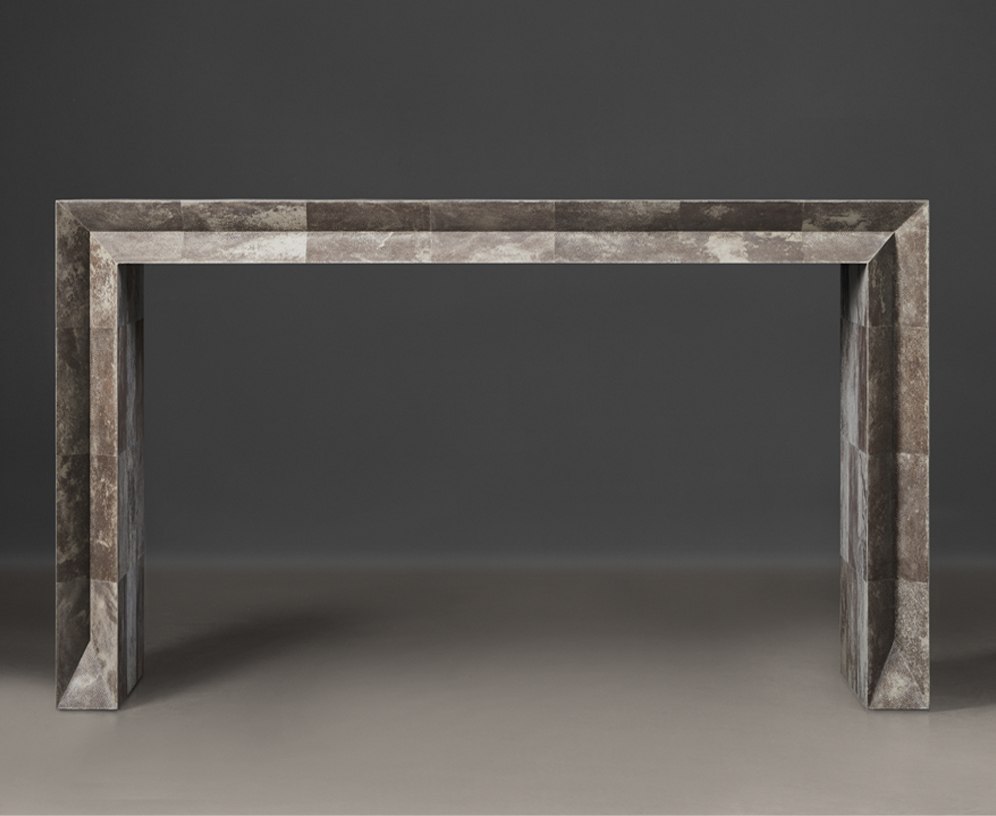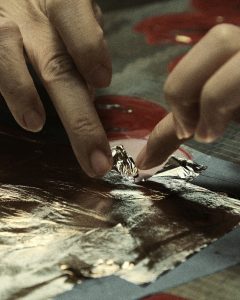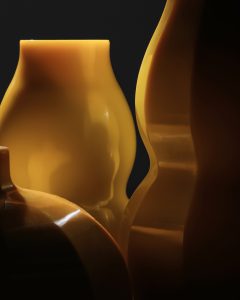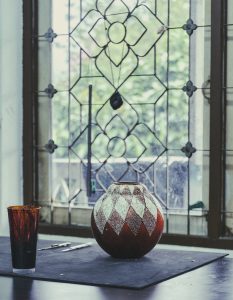Paper-folding has been the inspiration for some of Alexander Lamont’s most iconic designs. Like the decorative materials that have become synonymous with Alexander Lamont’s work, paper itself is a natural material with a diverse history spanning the great cultures of the world from far east Asia to South America via the civilizations of the Islamic world and Europe.
When we think of origami we think of graceful paper cranes, cute little jumping frogs and other cleverly constructed paper animals. The art of paper-folding was first popularized in Europe in the 18th century by a German educator who saw in this ancient Asian art form an advantageous educational tool to teach children discipline and the precepts of geometry. Today paper folding is known as a pleasurable past time but it has also been widely used in design and architecture for model-making, studies and experimentation.
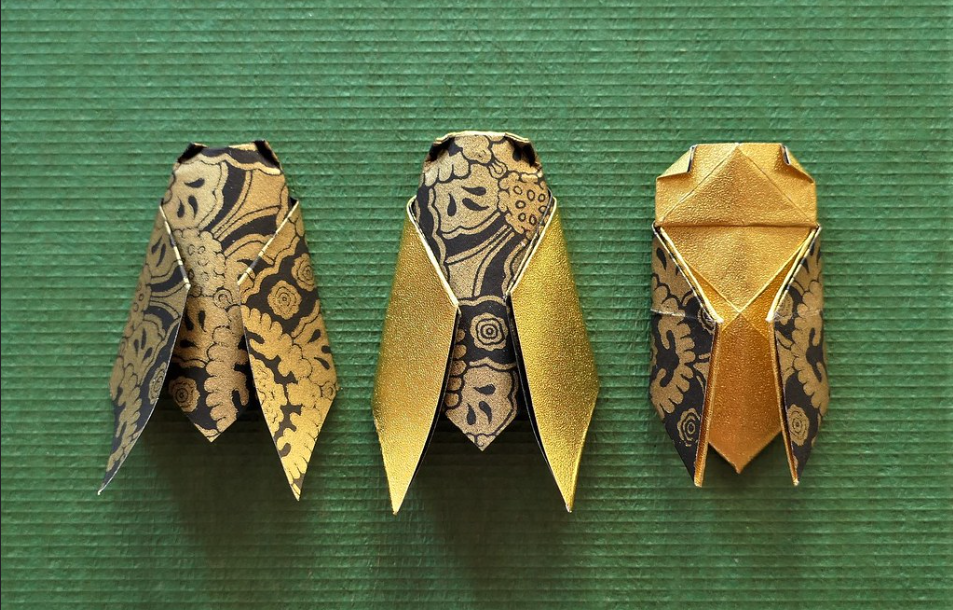
The origins of origami date back a thousand years when monks in Japan used the artform to create decorations for their temples. It’s likely however that the art of paper-folding has roots in China where paper was first invented in about the year 105 CE. From there paper-making skills migrated to Korea and then Japan via Buddhist monks by about 600 CE. Japanese paper makers improved the quality of paper so that it could be used for folding. Here began a beloved national past time and tradition that has since spread around the world popularized in the 20th century by Japanese masters such as Akira Yoshizawa, artists such as Josef Albers of the Bauhaus movement and US pioneers such as Lillian Oppenheimer

Over centuries paper has evolved into a surface valued not only for the written word but also for construction and modelling in 3-D. It was the idea of a structure made from paper with its sharp folds, acute angles and tapering lines providing the “engineering” of the piece, that inspired Alexander to create the popular Etched Twin series, as well as the Facet and Kertas consoles.

Etched Twin Series
The Etched Twin console was born from the idea of two forms interacting together with the smaller table nesting inside the larger. The lines inspired by the shapes of folded paper take on a strong sculptural aspect in etched steel with a monochrome finish.
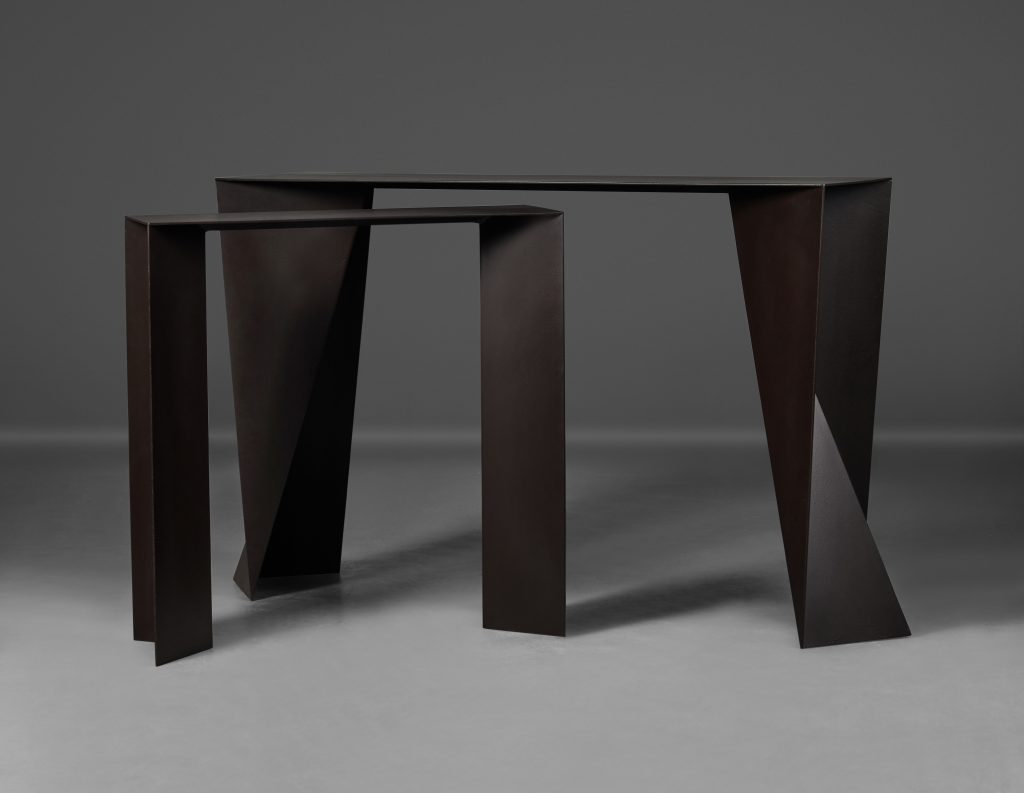
The popular Etched Twin idea was further developed in 2024 with the addition of the Etched Twin side table and Etched Twin coffee table as part of the Cicada collection.
The origami folded forms of these more generously proportioned tables create volume while retaining the elegantly angled sharp lines of the original concept and the idea of a structure made from a single piece of material.

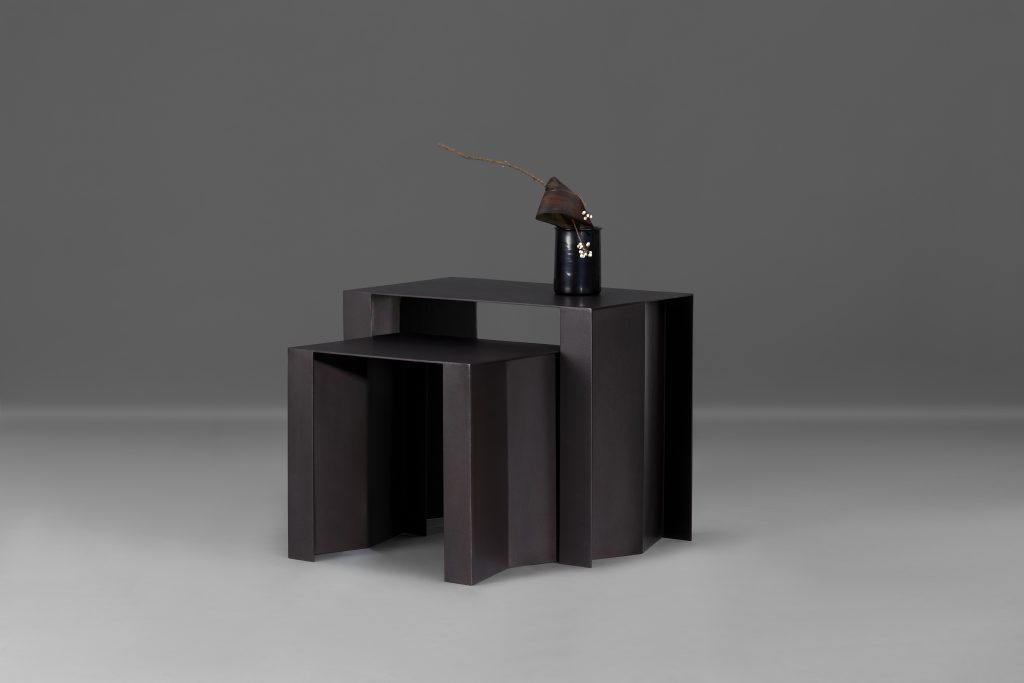
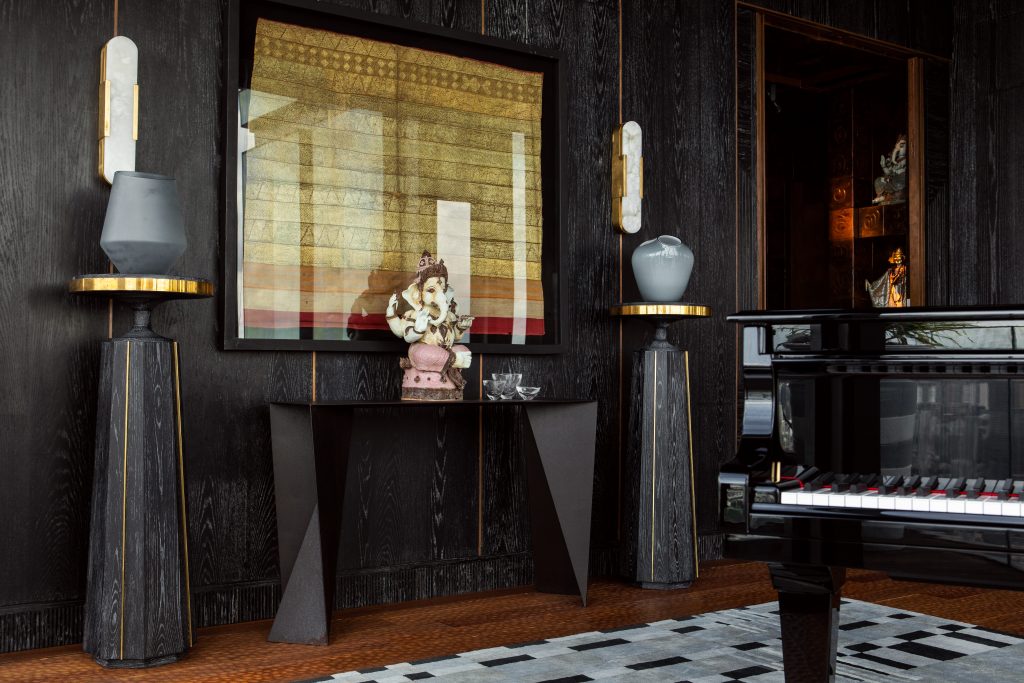
Facet Console
The Facet Console plays with the idea of a table made from paper and the strength and architecture created by tapering lines and folds. This perfectly proportioned and well-balanced piece in Natural Speckle shagreen sits quietly behind a sofa or in an alcove bringing its elegant lines and subtle folds to the geometry of a room. The feet are bronze.

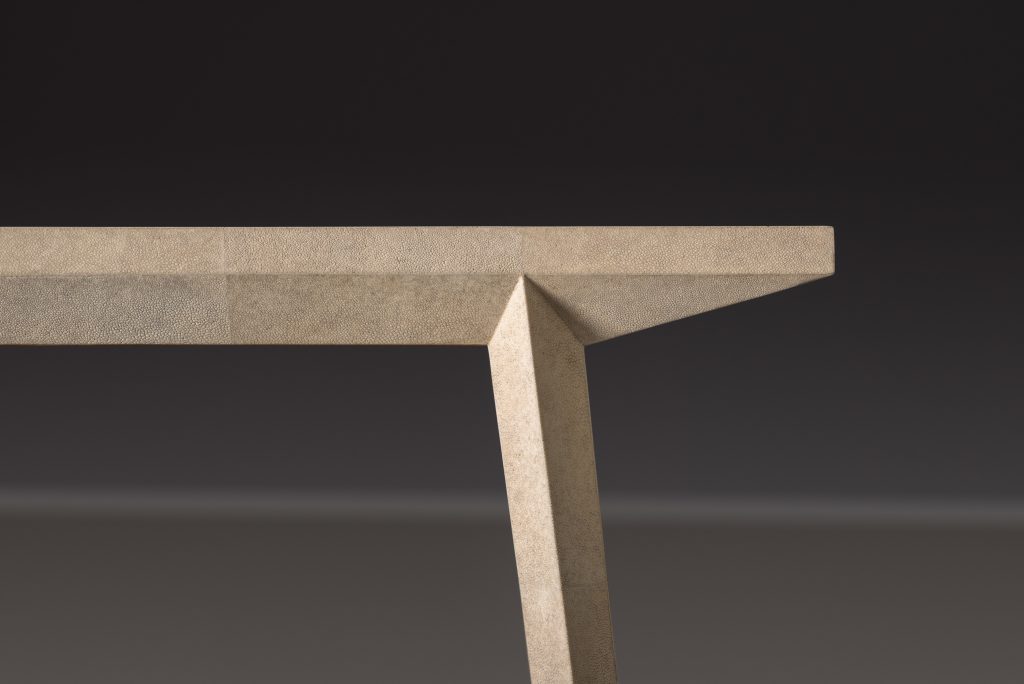
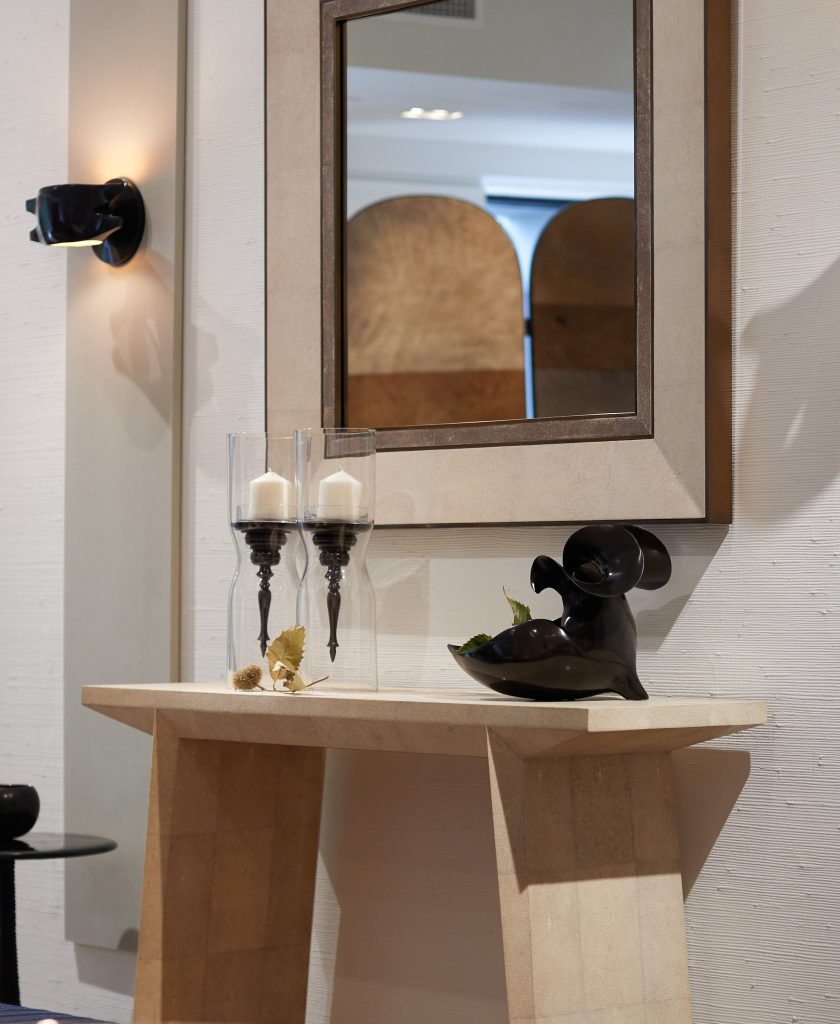
Kertas Console
An iconic design in our collection since 2016, the Kertas Console was inspired by origami. The folded lines enter the volume of the console giving rise to striking angles, corners and reflection of light. Raw shagreen in Natural Chocolate tone wonderfully enhances the contemporary architectural structure.

The Kertas Console design was selected by Bergdorf Goodman for its shoes and handbag department in New York.
